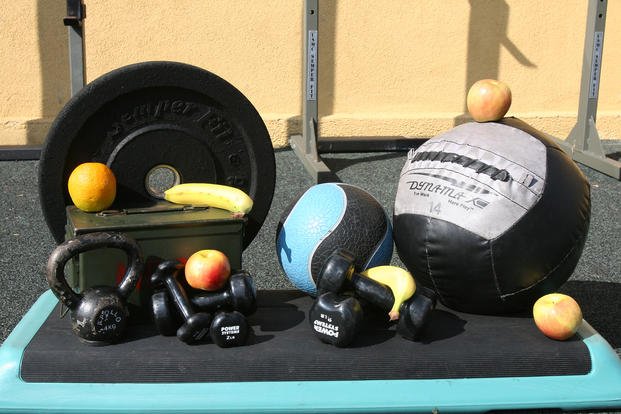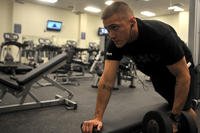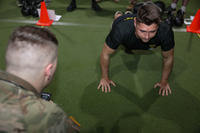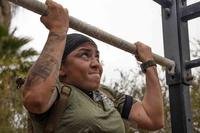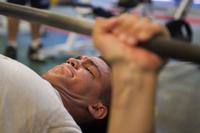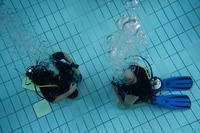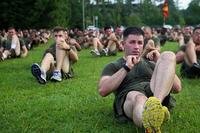Gaining weight often will sneak up on you year after year. It may first look like a one- or two-pound increase, but in 10 years, you have accumulated 10-20 pounds of extra weight. Here is a classic question that many older athletes and fitness enthusiasts learn as the high metabolism from their teens or 20s starts to slow down later in life.
Stew, I am a highly active 50-year-old male and do workouts that most people half my age can't do. So I would consider myself very fit; however, I need to drop a few pounds as I see it slowing me down on events like running, rucking, pull-ups, etc. What advice do you have for the very active old guy who still wants to see performance improvements, like over 20 pull-ups, sub seven-minute mile runs, and still have strength to lift a respectable amount of weight when in the weight room? Jim
Jim, I love this question, as it is a battle I have been dealing with as my fourth decade on this Earth turns into my fifth. After a lift cycle, I find that running and doing pull-ups are more difficult due to my increased weight gain of 10-15 pounds. Even though my strength has increased, some exercises are tough to do when you are heavier.
I have gone through this annual weight-gain lifting cycle for 20 years now, and after last year's painful transition into running and PT phases in the spring and summer, I told myself, "No more." So the plan is still to lift (not super heavy), do TRX exercises to reduce repetitions of calisthenics and stay lean with some added cardio on the back end of each workout (short run, longer bike, elliptical or swims).
This is will help. The transition to running and rucking more and higher-repetition calisthenics will be much easier. But it is no longer solely about the workout.
Gone are the days where a hardcore workout can outwork the diet. A focus on food intake is required, just as much as your workouts. A reduction is calories is where you usually should start. For instance, I typically eat clean with not "much" sugar, breads and fast foods, so a renewed focus on no sugar, breads, pizza and fast food is where I like to start. Then when I do eat, I start off with a big salad (green lettuce, tomato, mushrooms, onions, carrot slices and a piece of broccoli or two) and place my main course (meat, fish, chicken) and vegetables/fruit on a salad plate.
I usually work out in the morning, so my post workout meal is breakfast, and I replace that with a protein shake. I prefer this brand of protein: Ascent -- the same protein used in making baby formula (which is more regulated). So it is actually classified as a food, not a supplement.
Here are some other tips that might help with moving the scale backward:
- If I eat a sandwich, I take off one slice of bread and reduce my bread intake by 50%.
- Just add water. Drink more water throughout the day.
- If you drink soda or diet drinks with fake sugar, try to get off them.
- If you need a caffeine source and do not like coffee, try unsweetened tea. I prefer iced tea.
- Find low-calorie snacks like pickles or small piece of fruit.
- Keep the scale in the kitchen. When you feel like snacking, step on the scale.
- When eating out, start with a big salad, eat half of your main course and take half home.
- Get your second exercise session of a walk or light cardio in the afternoon/evening to burn a few hundred more calories.
There are many things you can do to reduce calories. Do not overdo the caloric reduction, because you may find you will lack energy to do you higher-intensity workouts. Most people keep their recommended daily intake at 1,500 (women) to 2,000 (men) calories. Any less than that will require a registered dietician to assist, but with challenging workouts and an active lifestyle, you should create the caloric deficit you need to drop a few pounds a week. Do this for a month or two, and you will be in the zone you are seeking and more lean to perform better at your favorite exercises.
Stew Smith is a former Navy SEAL and fitness author certified as a Strength and Conditioning Specialist (CSCS) with the National Strength and Conditioning Association. Visit his Fitness eBook store if you’re looking to start a workout program to create a healthy lifestyle. Send your fitness questions to stew@stewsmith.com.
Want to Learn More About Military Life?
Whether you're thinking of joining the military, looking for fitness and basic training tips, or keeping up with military life and benefits, Military.com has you covered. Subscribe to Military.com to have military news, updates and resources delivered directly to your inbox.
